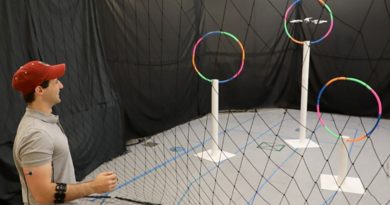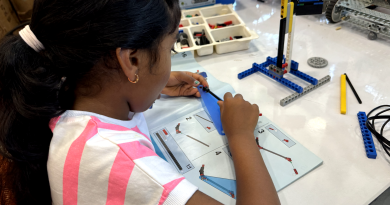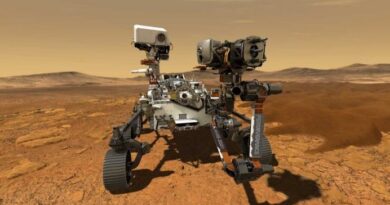New Military Robots Transform Their Wheels Into Legs Without Humans
DARPA partnered with researchers to build variable robots capable of switching from wheels to legs.
A team of researchers is engineering mobile robots for military use capable of judging whether wheels or legs are better suited to traverse immediate environments — with or without human help, according to a blog post shared on Texas A&M University’s website.
The Defense Advanced Research Projects Agency (DARPA) formed a partnership with Kiju Lee at Texas A&M University to improve the robots’ ability to move through urban military environments autonomously.
This is part of the DARPA OFFensive Swarm-Enabled Tactics (OFFSET) program — which awarded Lee and a team of graduate students another contract, after her earlier success developing a mixed-reality swarm simulator involving consensus-based decision making, to allow for adaptive human-swarm teaming behavior. This last accomplishment was included in the OFFSET Sprint-3, and was showcased during the OFFSET’s third field experiment (FX3), in addition to projects from other showcasing teams, according to the A&M blog post.
ee and her team are at present engineering an adaptable Wheel-and-Leg Transformable Robot (α-WaLTR) — capable of moving over dynamic surfaces, like staircases, with greater efficiency. The α-WaLTR will roll with wheels or walk with legs depending on the surrounding environment — and will also decide for itself which is needed, if necessary.
“Legged locomotion is more versatile, but suffers from inherent structural, mechanical and control complexities,” said Lee. “The proposed testbed will be equipped with novel wheel/leg transformable mechanisms, which can switch between the two locomotion modes actively adapting to its environment, but without needing any additional actuator.”
As of writing, the team is developing prototypes at lightspeed to showcase the new hardware platform at the OFFSET FX5 — which is set for sometime in Feb. 2021.
While the robots are designed with military use in mind, the team thinks the technology might transcend the field of defense.
“While the current focus is on defense and other military applications, these types of adaptable mobile robots can be applied to many other areas, such as space, domestic service, surveillance and agriculture,” added Lee.
It often feels like we’ll never see robots walking down public streets as a common site in urban environments. But with a little luck, Lee’s robots might move beyond military applications, rolling and walking their way across even the most broken sidewalks.
Source: https://interestingengineering.com




